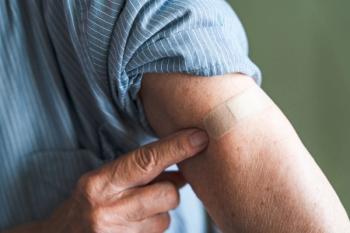
Phase 1/2 Trial of Investigational Herpes Zoster Vaccine Candidate Underway
Researchers are evaluating the safety, tolerability, and immunogenicity of shingles vaccine candidate Z-1018.
The first participant in a phase 1/2 clinical trial of Z-1018, an investigational vaccine candidate being developed by Dynavax for the prevention of
Researchers for the randomized, active-controlled, dose escalation, multicenter trial will be evaluating the safety, tolerability, and immunogenicity of the vaccine candidate. Approximately 440 healthy adults aged 50 to 69 years across 3 trial sites in Australia are expected to be enrolled.
Z-1018 will be evaluated compared to the zoster vaccine recombinant, adjuvanted (Shingrix), which is the only FDA-approved vaccine indicated for the prevention of herpes zoster in adults aged 50 years and older and adults aged 18 years and older with an increased risk of developing shingles due to immunodeficiency or immunosuppression.2
“We believe there is an opportunity to develop an improved shingles vaccine with a significantly better tolerability profile compared to the market-leading shingles vaccine,” said Dynavax Chief Medical Officer Rob Janssen, MD, in a news release. “One of the unique advantages of our vaccine candidate is CpG 1018 adjuvant’s established safety and tolerability profile, combined with its ability to induce strong CD4+ T-cell responses, which are thought to be critical in preventing the reactivation of the herpes zoster virus.”
Shingles is caused by the varicella-zoster virus, the same virus that causes chickenpox. For most adults, the varicella-zoster virus remains inactive and does not lead to shingles; however, 1 in 3 adults experience reactivation of the virus which leads to shingles. Symptoms include fluid-filled blisters; burning, shooting pain; tingling, itching, or skin numbness; and chills, fever, headache, or upset stomach.3
READ MORE:
Shingles cases typically last 3 to 5 weeks, but some individuals may experience postherpetic neuralgia (PHN) in the area where the rash occurred. Pain from PHN can cause depression, anxiety, sleeplessness, and weight loss.
The CDC recommends4 that all adults aged 50 years and older receive 2 doses of Shingrix to prevent
Shingrix is “more than 90% effective at preventing shingles and PHN,” the CDC noted, and immunity “stays strong for at least the first 7 years after vaccination.” Shingrix is 68% to 91% effective in preventing shingles in adults with weakened immune systems.4
The CDC recommends that adults receive a 2-dose Shingrix vaccination even if they have had shingles, received the chickenpox vaccine, or were previously vaccinated with the zoster vaccine, live (Zostavax). As of November 18, 2020, Zostavax is no longer available for use in the United States.
READ MORE:
References
Dynavax initiates phase 1/2 study of novel shingles vaccine program. News release. Dynavax. June 27, 2024. Accessed July 9, 2024.
https://investors.dynavax.com/news-releases/news-release-details/dynavax-initiates-phase-12-study-novel-shingles-vaccine-program Shingrix. FDA. Reviewed May 23, 2023. Accessed July 9, 2024.
https://www.fda.gov/vaccines-blood-biologics/vaccines/shingrix Shingles. National Institutes of Health. Reviewed October 12, 2021. Accessed July 9, 2024.
https://www.nia.nih.gov/health/shingles/shingles Shingles vaccination. CDC. Reviewed May 8, 2023. Accessed July 9, 2024.
https://www.cdc.gov/vaccines/vpd/shingles/public/shingrix/index.html
Newsletter
Pharmacy practice is always changing. Stay ahead of the curve with the Drug Topics newsletter and get the latest drug information, industry trends, and patient care tips.

















































































































